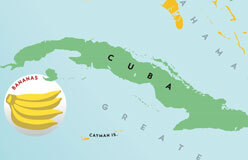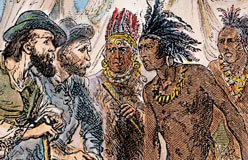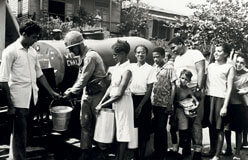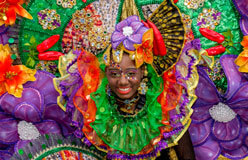The first settlers of the Caribbean islands were indigenous (in-DIJ-i-nus) people from South America. (Indigenous means “native.”) They arrived in three waves, over several thousand years.
The first, the Ciboney, were probably hunter-gatherers who lived in small bands. They were pushed north and west to western Cuba and southwestern Hispaniola by the second wave, the Arawak. These two peoples dominated the Greater Antilles in 1492. But they were feeling pressure from the third wave, the Carib. The Carib lived mostly in the Lesser Antilles but were pushing north into Arawak territory. Into this struggle crashed Christopher Columbus, an Italian navigator representing the Spanish crown. Thinking he had reached Asia, Columbus began looking for riches to take back to Spain. Over the next five centuries, thousands more European colonists and adventurers used the Caribbean in any way possible to get rich quickly.







